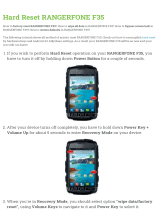
28
TROUBLESHOOTING GUIDE
Depending on the model, your washing machine is
equipped with various automatic safety functions.
This enables faults to be detected in good time and
the safety system can react appropriately. These
faults are frequently so minor that they can be
removed within a few minutes.
The washing machine will not start, no
indicator lamps are on.
Check whether:
• the mains plug is inserted into the socket;
• the wall socket is functioning correctly (use a
table lamp or similar appliance to test it).
The washing machine will not start... and the
“Start/Pause” indicator lamp flashes.
Check whether:
• the door is properly closed (child safety);
• the “Start/Pause” button has been pressed;
• the “Water tap closed” indication lights up. Open
the water tap and press the “Start/Pause” button.
The appliance stops during the programme
(varies depending on model)
Check whether:
• the “Rinse Hold” indicator lamp lights up;
terminate this option by pressing the
“Start/Pause” button or by choosing and
starting the “Drain” programme;
• another programme has been selected and the
“Start/Pause” indicator lamp is flashing.
Reselect the desired programme and press the
“Start/Pause” button.
• the door has been opened and the “Start/
Pause” indicator lamp is flashing. Close the door
and press the “Start/Pause” button again.
• the washing machine’s safety system has been
activated (see “Fault description table”).
Residue from detergent and additives left in
the detergent drawer at end of wash.
Check whether:
• the cover grid of the softener chamber and the
separator of the main wash chamber are
correctly installed in the detergent dispenser and
all parts are clean (see “Care And Maintenance”);
• sufficient water is entering.
The mesh filters of the water supply could be
blocked (see “Care And Maintenance”);
• the position of the separator in the main wash
chamber is adapted to the use of powder or
liquid detergent (see “Detergent and Additives”).
Machine vibrates during spin cycle.
Check whether:
• the washing machine is level and standing firmly
on all four feet;
• the transport bolts have been removed. Before
using the machine, it is imperative that the
transport bolts are removed.
Final spin results are poor.
The washing machine has an imbalance detection
and correction system.
If individual heavy items are loaded (e.g. bathrobes),
this system may reduce the spin speed
automatically or even interrupt the spin completely
if it detects too great an imbalance even after
several spin starts, in order to protect the washing
machine.
• If the laundry is still too wet at the end of the
cycle, add smaller articles of laundry and repeat
the spin cycle.
• Excessive foam formation may prevent spinning.
Use the correct amount of detergent.
• Check that the spin speed selector has not been
set to “0”.
If your washing machine has a time display:
the programme time initially displayed is
lengthened / shortened by a period of time:
This is a normal capacity of the washing machine to
adapt to factors that can have an effect on the wash
programme time, e.g.:
• excess foam formation;
• load imbalance due to heavy items of laundry;
• prolonged heating time due to reduced inlet
water temperature;
Because of influences like these, the time remaining
in the programme run is recalculated, and updated
if necessary. In addition, during the filling phase, the
washing machine determines the load and if
necessary adjusts the initial programme time
displayed accordingly. During such update periods,
an animation appears on the time display.














